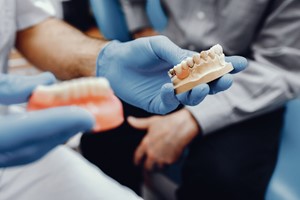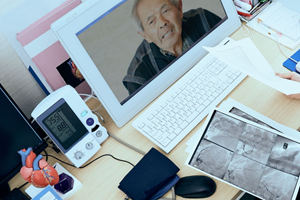Orthopedics is a medical specialty that is focused on the musculoskeletal system, which includes bones, tendons, muscles, tendons, ligaments, joints, and nerves. This branch of study is named from the combined Greek words ortho and pais, meaning “straight" and “children,” respectively. While many people tend to think that owning or using a piece of orthopedic equipment is a reward for getting old, musculoskeletal disorders can affect anyone of any age. In fact, children can experience a number of problems due to birth defects or sports injuries, such as clubfoot, Kohler's Disease, Sever's Disease, and Sprengel's Deformity.
Some of the simplest of kinds of orthopedic equipment likely exist in any home medicine cabinet. Ice packs and heating pads, for example, are considered orthopedic therapy tools. The former is applied immediately after an acute injury, such as a sprained ankle. Applying heat to a site of chronic injury, such as a strained muscle, can help to relax underlying tissues and reduce inflammation. However, there are times when an orthopedic doctor may recommend alternating both therapies for certain conditions.
Since knee injuries are one of the most commonly experienced problems in orthopedic medicine, there are a variety of different knee braces available. Most knee injuries are related to an anterior cruciate ligament (ACL) tear. The piece of orthopedic equipment usually recommended for this type of injury is a functional knee brace, which allows the patient to resume many normal activities while protecting the knee. Prophylactic knee braces, on the other hand, are designed to prevent injury. In fact, athletes sometimes wear them for this purpose.
Depending on the nature and origin of the condition, it may eventually become necessary to consult with an orthopedic surgeon. Orthopedic surgery is considered when all other treatments fail to relieve a chronic condition, such as arthritis. Some of the most common types of orthopedic surgeries are hip and knee replacement and procedures to replace lost cartilage, such as mosaicplasty. Surgery may also be performed to repair torn ligaments or to improve position and function, as is the case with a lateral release of the patella. Orthopedic equipment, such as a walker or cane, is usually suggested to assist in post-operative recovery from these kinds of procedures.
Orthopedic Devices Market Valuation Worth USD 53.8 Billion by 2030 at 6.5% CAGR – Report by Market Research Future (MRFR)
Market Scope:
Orthopedic device refers to a piece of special equipment engineered to correct deformities or maintain and restore the function of the human skeletal system, its articulations, and related structures. Here are some of the commonly used orthopedic devices: muscle stimulators, lumbosacral supports, knee immobilizers, cast heels, Invalid rings, bone wax exercise devices, etc.
Market Drivers
The global market for orthopedic devices has registered a massive surge in the growth rate in the last few years. The market's growth is mainly accredited to the rising prevalence of orthopedic disorders such as rheumatoid arthritis (RA) and osteoporosis. Furthermore, the factors such as the number of sports & road traffic accidents and the increasing elderly population are also projected to boost the demand for orthopedic devices over the forecasted timeframe. In addition, the emergence of the latest technologies is anticipated to offer lucrative opportunities to the players worldwide.
Market Restraints
On the other hand, the high costs associated with these orthopedic devices may impede the market's growth.
Orthopedic Devices Market COVID-19 Impact
The global COVID-19 pandemic has had an unexpected impact on a majority of the market sectors worldwide. The global health crisis has caused a significant change in orthopedic and trauma surgery. The industry faced some significant unexpected challenges given the imposition of several norms and regulations to stop the spread of the disease. Self-employed surgeons faced a substantial shortage of PPE kits because of their lack of formal security preparation. The pandemic has led to causing chaos across the orthopedic surgery market in recent times. Some orthopedic providers have offered help by providing information on treating patients with COVID-19 in the United States. China started elective operations but is yet to hit the pre-pandemic stage. Policies across the US and Europe now enforce limits on all but the most necessary surgical procedures. Not just that it is impossible to examine the speed and duration of the case, but it is still uncertain when catch-up will occur.
Orthopedic Devices Market Segment Analysis
Among all the types, the joint replacement segment is projected to lead the global orthopedic market over the forecasted timeframe. The significant aspect causing an upsurge in the segment's growth is the increasing population of elderly across the globe. Furthermore, the growing incidence of osteoporosis and osteoarthritis is likely to boost the segment's growth over the coming years.
Out of all the application areas, hip orthopedic devices are likely to secure the top position in terms of revenue. The segment's growth is mainly credited to the fact that osteoarthritis flare is more frequent in patients lacking conservative treatment.
Among all the end-use sectors, the hospital sector has dominated the global orthopedic devices market. The segment's growth is attributed mainly to the high rates of admissions to hospitals. Furthermore, the wide variety of facilities offered at a single location is also projected to catalyze the segment's growth over the forecasted era.
By Karyn Maier
Source: Market Research Future
https://www.thehealthboard.com/
https://www.globenewswire.com/













